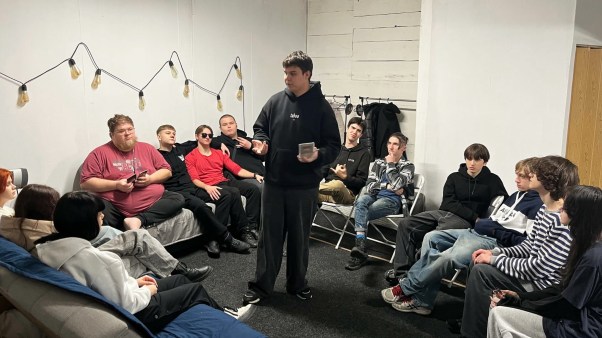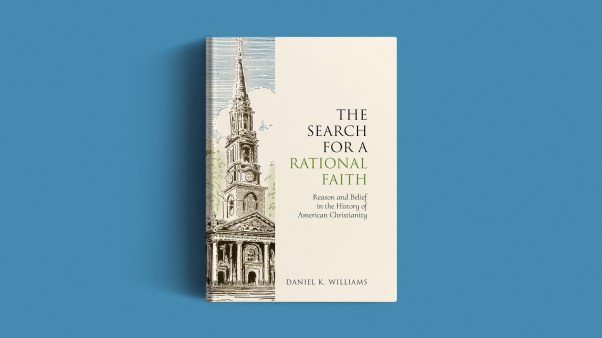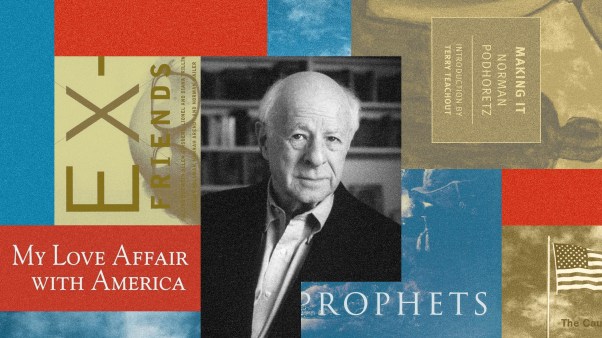When I was a teenager and heard “It Ain’t No New Thing” by Andraé Crouch and The Disciples, I instantly fell in love with the sound. The song, which stood out at the time in the world of gospel music, had a Dixieland feel: pennywhistles blowing, slide trombones moaning, and banjo-pickin’ joy, all fused with lyrics testifying to the movement of God throughout the ages.
In African American gospel music, new sounds and idioms have always emerged, and sometimes they were integrated amid resistance. Lately, this issue has cropped up with Maverick City Music, whose genre-blending approach (gospel plus contemporary Christian music, or CCM) has sparked debates about whether it’s diluting a beloved art form.
Criticisms against the group increased more recently after its cofounder—Norman Gyamfi—said on a podcast that the state of traditional gospel music was “stale,” gospel singers were singing “too hard,” and the entire genre was not evolving with the times. Gyamfi then brought race into the conversation, saying Maverick City Music had been composed of Black people with white writers and producers who were “training them not to over-sing.” His remarks were disrespectful to many in the industry and rightfully deserve criticism. But I also think Maverick City Music haters—who have long argued the musical group is watering down gospel—are wrong too.
From shape-note hymnody to Thomas Dorsey’s blues gospel, Mahalia Jackson’s clarion cry to Kirk Franklin’s hip-hop declarations, gospel music has always been an evolving stream—echoing mercy, resisting oppression, and calling us into human flourishing. Fans often think of the genre in fixed categories: the Negro spirituals, then the songs of Jackson, Crouch, and Franklin. But it has always changed and adapted. And Maverick City—with its swirl of gospel harmonies, hip-hop cadences, jazz voicings, and Pentecostal praise anthems—is just one more extension of that.
The essence of gospel music, as curated by the Black church, has always been the liberating evangelistic message of the good news of Jesus Christ. The late historian Horace Clarence Boyer more particularly defined the genre as music that reflects the personal religious experience of the African American community and uses the musical devices of the church—such as call-and-response, syncopation, improvisation, hand clapping, and foot stomping—to convey the message of the gospel. But composers have continued to expand on these practices.
When World War II was wrapping up in 1945, gospel quartets emerged in Black churches. Two decades later, Andraé Crouch blended Motown polish with Pentecostal fire. Then in 1978, Walter and Tramaine Hawkins expanded gospel’s sonic vocabulary with synthesized string orchestrations and emotional vulnerability. By the ’80s, the genre bore traces of rock, Latin percussion, and mass-choir power. The ’90s gave us the gospel choir God’s Property; Kirk Franklin, who brought holy disruption with hip-hop sensibilities and choir-led chants; and The Gospel According to Jazz, where modal harmonies became a new form of prayer. The 2000s led to the rise of Lecrae and gospel-influenced, theology-rich rap. Now, Maverick City invites us into a new form of worship—decentralized, diverse, and deeply Spirit led. It’s not diluted or worse. Just different.
Kevin Bond, a ten-time Grammy Award–winning producer who worked with Franklin and artist Edwin Hawkins, told me during a recent interview that back in the day, both men were seen “as ahead of their time, often misunderstood and even criticized for challenging gospel music norms.”
“But what we need to realize is that each generation builds on the shoulders of those before it, growing a little taller in the musical spectrum and reaching different audiences,” Bond told me. “The key is never to tear down the previous generation, because doing so weakens our position and drags us lower than we would be if we stood firmly on their shoulders.”
Despite its evolution, the heart of gospel music has never changed. It is a servant of sound doctrine, reaching across generations, genres, and geographies to reconcile all creation to the wise Creator God. And the Holy Spirit, ever faithful and free, breathes across changing tempos.
Gospel music is anchored in the sound of freedom (Gal. 5:1), not only from sin but also from social hierarchies, racial caste systems, and a rigid status quo. It is concerned about not only the freedom from those things but also the freedom to worship, create, and belong. Fans know gospel music has always preached perseverance to weary souls and uplifts without ignoring sorrow, embodying both struggle and hope. Even when artists rise to fame, the best of the genre resists ego and points us back to Christ and a horizontal embrace of humanity.
In many ways, Maverick City Music continues in this legacy. It’s inclusive, featuring racially diverse, some formerly incarcerated singers, and bilingual worship. The musical group has lifted the sounds of jubilee through a collection of songs dedicated to Negro spirituals. Its performances and covers reflect traditional devices used in gospel, including call-and-response, syncopation, and routine improvisations by lead singer Naomi Raine. But its songs are also fused with pop and rock elements that challenge the traditional gospel barriers, which members—who say they want to break down the “unspoken rules” in the world of Christian music—have openly acknowledged. “You can’t put it in a box,” artist Chandler Moore said of the group’s music in 2020. “It is what it is.”
Despite our proclivities, the gospel of Jesus Christ has always borrowed from our human way of communicating. When gospel music blends languages, collaborates across traditions, and displaces the central mic in favor of the collective voice, it is doing the work of reconciliation at a time when so much divisiveness vies for our attention. It is not fusion for fusion’s sake but the expression of a reconciled humanity.
Too often, this type of musical evolution gets mistaken for theological drift. But the core of gospel music—its fidelity to biblical orthodoxy—remains the same. We should also remember that the songs we love don’t just belong in a genre, but are Sprit-led music. And the Holy Spirit, who led creators of spirituals to embed hidden maps toward freedom, leads today’s singers to put theology within four-part harmonies, Auto-Tune, and free-verse lyrics. So whether it comes in the form of a spiritual, a choir anthem, a symphony, or a Maverick City song, gospel music’s mission has always remained the same: to reconcile, liberate, and profess the good news of Jesus Christ. Let us welcome this new iteration with an open heart.
Stephen Newby is a professor of music at Baylor University, where he also serves as the Lev H. Prichard III Endowed Chair in the Study of Black Worship. Newby is the coauthor of Soon and Very Soon: The Transformative Music and Ministry of Andraé Crouch and the author of Worship Outside the Music Box: Theology of Music & Worship and Multi-Ethnic Worship.


















